Health and Animal Husbandry teams have launched preventive measures and initiated an epidemiological investigation, after one case of brucellosis, was confirmed in a prisoner.
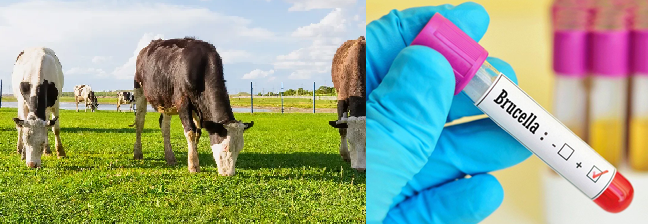
- The infection is passed on to humans through the ingestion of unpasteurized milk and milk products or contact with animal secretions.
Brucellosis:
- Brucellosis is a bacterial disease that mainly infects cattle, swine, goats, sheep and dogs.
- Humans can get infected if they come in direct contact with infected animals or by eating or drinking contaminated animal products or by inhaling airborne agents.
- According to the WHO, most cases of the disease are caused by ingesting unpasteurised milk or cheese from infected goats or sheep.
Symptoms:
- Fever, sweats, malaise, anorexia, headache and muscle pain
- While some signs and symptoms can last for long periods of time, others may never go away.
- These include recurrent fevers, arthritis, swelling of the testicles and scrotum area, swelling of the heart, neurologic symptoms, chronic fatigue, depression and swelling of the liver or spleen.
- Human to human transmission of the virus is rare.
Get an IAS/IPS ranker as your 1: 1 personal mentor for UPSC 2024
Attend Now
The Central Government announced that 5kg of free wheat or rice per monthwill be provided to around 80 crore people for the next two months, May and June.
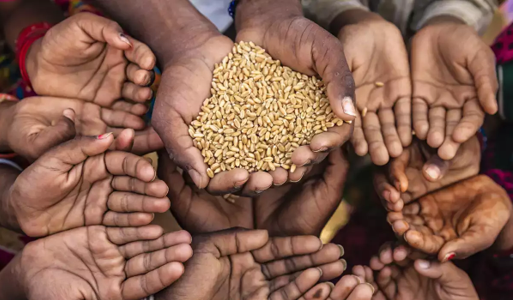
Major Highlights:
- This will be extended to beneficiaries under the National Food Security Act(NFSA).
- Nearly 8 million tonnes of food grains will be distributed under this scheme.
- The scheme is expected to bring relief to NFSA beneficiaries as it will be in addition to the regular entitlement of 5kg highly subsidised foodgrains to each beneficiary at Rs 3, 2 and 1 per kg of rice, wheat and coarse grains.
Pradhan Mantri Garib Kalyan Anna Yojana (PMGKAY):
- Pradhan Mantri Garib Kalyan Anna Yojana is a food security welfare schemeannounced by the Government of India in March 2020.
- PM-GKAY is a part of Atma Nirbhar Bharat to supply free food grains to migrants and poor.
- The program is operated by the Department of Food and Public Distributionunder the Ministry of Consumer Affairs, Food and Public Distribution.
Aim:
- To feed the poorest citizens of India by providing grain through the Public Distribution System to all the priority households (ration card holders and those identified by the Antyodaya Anna Yojana scheme).
- PMGKAY provides 5 kg of rice or wheat (according to regional dietary preferences) per person/month and 1 kg of dal to each family holding a ration card.
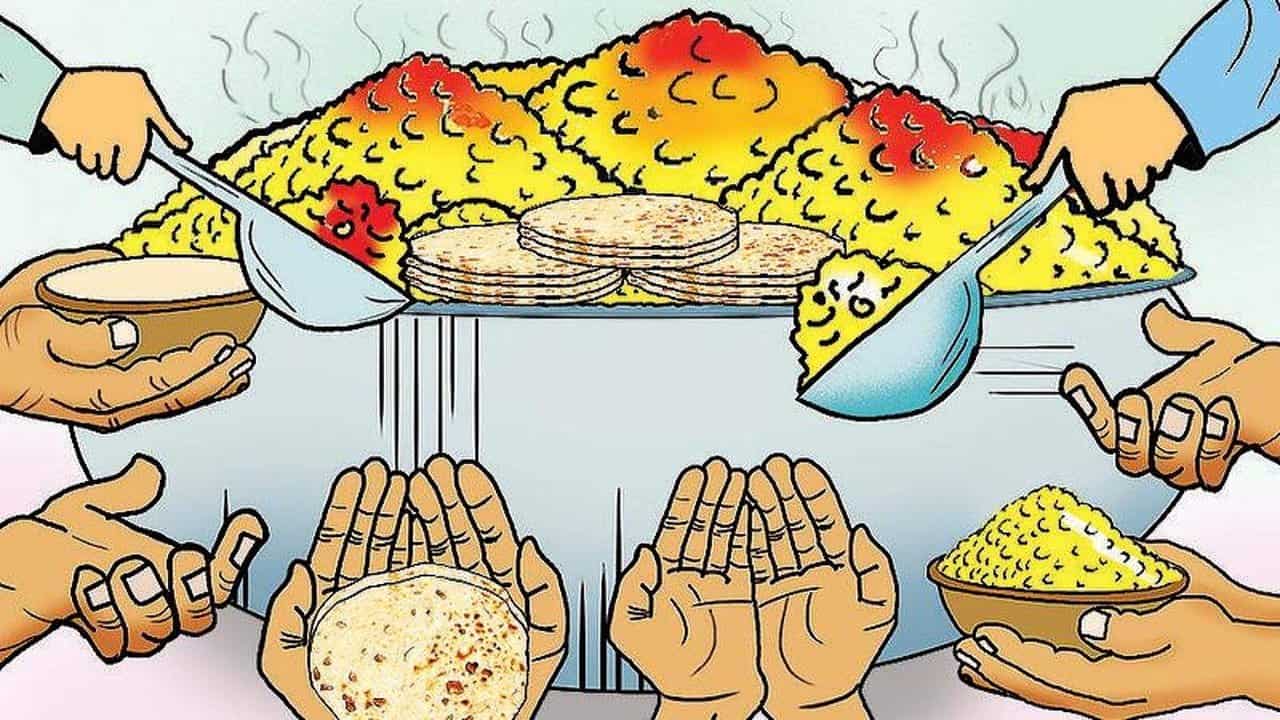
Eligibility/ Beneficiaries:
- Families belonging to the Below Poverty Line – Antyodaya Anna Yojana (AAY) and Priority Households (PHH) categories will be eligible for the scheme.
- PHH are to be identified by State Governments/Union Territory Administrations as per criteria evolved by them.
- AAY families are to be identified by States/UTs as per the criteria prescribed by the Central Government:
- Households headed by widows or terminally ill persons or disabled persons or persons aged 60 years or more with no assured means of subsistence or societal support.
- Widows or terminally ill persons or disabled persons or persons aged 60 years or more or single women or single men with no family or societal support or assured means of subsistence.
- All primitive tribal households.
-
- Landless agriculture labourers, marginal farmers, rural artisans/craftsmen such as potters, tanners, weavers, blacksmiths, carpenters, slum dwellers, and persons earning their livelihood on daily basis in the informal sector like porters, coolies, rickshaw pullers, hand cart pullers, fruit and flower sellers, snake charmers, rag pickers, cobblers, destitute and other similar categories in both rural and urban areas.
- All eligible Below Poverty Line families of HIV positive persons.
Get an IAS/IPS ranker as your 1: 1 personal mentor for UPSC 2024
Attend Now
Note4Students
From UPSC perspective, the following things are important :
Prelims level: Not much
Mains level: Paper 2- Role of data in shaping the global order
Digital data revolution
- The Industrial Revolution restructured the global manufacturing order to Asia’s disadvantage.
- But in the ‘Digital Data Revolution’, algorithms requiring massive amounts of data determine innovation, the nature of productivity growth, and military power.
- Mobile digital payment interconnections impact society and the international system, having three strategic implications.
3 implications of mobile digital payment interconnections
1) Symbiotic nature of military and civilian system
- Because of the nature and pervasiveness of digital data, military and civilian systems are symbiotic.
- Cybersecurity is national security, and this requires both a new military doctrine and a diplomatic framework.
2) Productivity advantage of data to Asia
- The blurring of distinctions between domestic and foreign policy and the replacement of global rules with issue-based understanding converge with the growth of smartphone-based e-commerce, which ensures that massive amounts of data give a sustained productivity advantage to Asia.
3) India can negotiate new rules as an equal with US and China
- Data streams are now at the centre of global trade and countries’ economic and national power.
- India, thus, has the capacity to negotiate new rules as an equal with the U.S. and China.
How data shaped US-China relations
- Innovation based on data streams has contributed to China’s rise as the second-largest economy and the “near-peer” of the U.S.
- The national security strategy of the U.S. puts more emphasis on diplomacy than military power to resolve conflicts with China, acknowledging that its military allies have complex relationships with Beijing, as it seeks to work with them to close technology gaps.
- China’s technology weakness is the dependence on semiconductors and its powerlessness against U.S. sanctions on banks, 5G and cloud computing companies.
- But China’s digital technology-led capitalism is moving fast to utilise the economic potential of data, pushing the recently launched e-yuan and shaking the dollar-based settlement for global trade.
How global strategic balance will be shaped by data standard
- China has a $53-trillion mobile payments market and it is the global leader in the online transactions arena, controlling over 50% of the global market value.
- India’s Unified Payments Interface (UPI) volume is expected to cross $1 trillion by 2025.
- The U.S., in contrast, lags behind, with only around 30% of consumers using digital means and with the total volume of mobile payments less than $100 billion.
- The global strategic balance will depend on new data standards.
- The U.S., far behind in mobile payments, is falling back on data alliances and sanctions to maintain its global position.
India’s role in digital economy
- With Asia at the centre of the world, major powers see value in relationships with New Delhi.
- India fits into the U.S. frame to provide leverage.
- China wants India, also a digital power, to see it as a partner, not a rival.
- And China remains the largest trading partner of both the U.S. and India despite sanctions and border skirmishes.
Way forward for India
- India, like China, is uncomfortable with treating Western values as universal values and with the U.S. interpretation of Freedom of Navigation rules in others’ territorial waters.
- New Delhi’s Indo-Pacific vision is premised on “ASEAN centrality and the common pursuit of prosperity”.
- The European Union recently acknowledged that the path to its future is through an enhanced influence in the Indo-Pacific, while stressing that the strategy is not “anti-China”.
- The U.S. position in trade, that investment creates new markets, makes it similar to China’s Belt and Road Initiative.
Conclusion
India alone straddles both U.S. and China-led strategic groupings, providing an equity-based perspective to competing visions. It must be prepared to play a key role in moulding rules for the hyper-connected world, facing off both the U.S. and China to realise its potential of becoming the second-largest economy.
Get an IAS/IPS ranker as your 1: 1 personal mentor for UPSC 2024
Attend Now
Note4Students
From UPSC perspective, the following things are important :
Prelims level: Glacial Lake Outburst Floods
Mains level: Paper 3- Mitigating glacial lake outburst flood events
Melting of glaciers in Himalaya and GLOFs
- The Himalayan region is home to the largest ice mass outside of the planet’s Polar Regions.
- The glaciers in the Himalayas are melting at a faster rate creating new lakes and expanding the existing ones.
- The rising temperatures and extreme precipitation events make the region increasingly prone to a variety of natural hazards, including devastating glacial lake outburst floods (GLOFs).
- GLOFs occur when either a natural dam containing a glacial lake bursts or when the lake’s level suddenly increases and overflows its banks, leading to catastrophic downstream destruction.
- However, the remote, challenging Himalayan terrain and the overall lack of cellular connectivity throughout the region have made the development of early flood warning systems virtually impossible.
- In their recent work the Scientists point out that the surge of meltwater in mountain streams is most commonly caused by cloud-burst events during the monsoon season (June–July–August) time frame.
Satelitte-based real-time monitoring
- Satellite-based real-time monitoring of Himalayan glacial catchments would improve understanding of flood risk in the region and help inform an early flood warning system that could help curb disaster and save human lives, says a recent study.
- This should be the future strategy to reduce loss of human lives during glacial lake outburst floods (GLOF), said a study carried out by scientists from IIT Kanpur.
- The IIT Kanpur team suggests that efforts to help mitigate GLOF events in the future should include the creation of a network of satellite-based monitoring stations that could provide in situ and real-time data on GLOF risk.
- The integration of monitoring devices with satellite networks will not only provide telemetry support in remote locations that lack complete cellular connectivity but will also provide greater connectivity in coverage in the cellular dead zones in extreme topographies such as valleys, cliffs, and steep slopes.
Get an IAS/IPS ranker as your 1: 1 personal mentor for UPSC 2024
Attend Now
Note4Students
From UPSC perspective, the following things are important :
Prelims level: Not much
Mains level: Paper 2- Covid vaccination policy and issues with it
The article deals with the issues of different prices set for the Covid vaccine and its implications.
Understanding the positive and negative externalities
- Vaccines have a positive externality; it is a good whose consumption benefits not just the one who has it.
- A vaccinated person is not only relatively protected against the disease himself/herself, but also less likely to transmit it to others.
- Usually, a person getting vaccinated takes into account only his/her own cost and benefit, while ignoring the fact that he/she lowers the chances of infecting others.
- It is the opposite of smoking, which has “negative externality”.
- Since every individual ignores the full set of benefits/costs from consuming goods with positive/negative externalities, the market isn’t always the most efficient mechanism for allocation of such goods.
- That is a key reason why governments treat goods having large positive externalities as “public goods” and provide these while factoring in the full costs and benefits to society.
Analysing the issues with vaccine policy
1) Vaccine inequality
- It requires vaccine manufacturers to supply 50 per cent of their production to the Centre at controlled prices, while allowing them to sell the remaining half in the open market including to state governments at pre-announced “self-set” prices.
- To start with, the new policy can lead to differential access to the vaccine.
- Manufacturers are supposed to “transparently declare” their prices in advance for their 50 per cent supply to the open market.
- But there is no limit per se on the retail price they would charge.
- This could lead to a whole range of prices and vaccine inequality, apart from diversion of supplies from the controlled low-price government centres to the open market.
- So, we may well have scarcity in the “mass” segment co-existing with a glut in the “elite” segment.
- There is also concerns about economic efficiency and the potential for market failure.
2) Economic efficiency and potential for market failure
- Imagine there are two sets of people in India.
- The first consists of those who are better off and can afford to stay back or work from home.
- This lot is also less likely to cause infection to others.
- The second set is mostly blue-collar workers, small traders, vendors and agriculturists.
- The nature of their work — on the shop floor or in the field — makes them naturally prone to infect others.
- It follows, then, that society gains from first vaccinating the latter, as they have a higher negative externality.
- The market will ignore those with lower purchasing power, despite them having a higher probability of spreading the disease.
- In fact, the bigger the income difference between the two segments, the greater will be the extent of market failure from simultaneous over-provisioning and under-provisioning.
Way forward
- The solution could be a single price to be paid to vaccine makers for all the doses that they supply.
- The price should be high enough to stimulate them to rapidly ramp up production.
- Those government should pay directly to the vaccine maker or the hospital administering the dose for those without sufficient means.
- The suggested solution is similar to the fertiliser subsidy, which is now disbursed to companies only after actual sales to farmers.
Consider the question “What policy should be followed for the vaccination in the country? What are the issues with the curent policy which involved different price for government and for open market.”
Conclusion
A single price for Covid-19 vaccines will stimulate production, ensure efficient vaccination.
Get an IAS/IPS ranker as your 1: 1 personal mentor for UPSC 2024
Attend Now
Note4Students
From UPSC perspective, the following things are important :
Prelims level: Not much
Mains level: Paper 3- Drone use for covid vaccine delivery
Conditional drone use exemption for vaccine delivery
- Ministry of Civil Aviation (MoCA) and Directorate General of Civil Aviation (DGCA) have granted conditional exemption to the Indian Council of Medical Research (ICMR).
- The exemption is granted for conducting feasibility study of Covid-19 vaccine delivery using drones in collaboration with IIT Kanpur.
- The permission exemption is valid for a period of one year or until further orders.
Entities using drone on conditional drone use exemption basis
- Conditional drone use exemption has been granted to the below entities for said purposes:
- Nagar Nigam of Dehradun, Haldwani, Haridwar & Rudrapur for preparation of GIS based property database & electronic tax register.
- West Central Railway, (WCR) Kota for train accident site & maintaining safety & security of the railway assets.
- West Central Railway, (WCR) Katni for train accident site & maintaining safety & security of the railway assets.
- Vedanta Ltd. (Cairn Oil & Gas) also received the conditional drone usage exemption for data acquisition for asset inspecting & mapping.
Get an IAS/IPS ranker as your 1: 1 personal mentor for UPSC 2024
Attend Now
Note4Students
From UPSC perspective, the following things are important :
Prelims level: Vulnerability Index
Mains level: Paper 3- Vulnerability to climate change
About the report
- Published this week, the report on ‘Climate vulnerability assessment for adaptation planning in India using a common framework’ was conducted in 2019-2020 across 29 States.
- It was part of a capacity building programme under the National Mission on Sustaining the Himalayan Ecosystem and National Mission on Strategic Knowledge for Climate Change.
- The report was prepared by IISc, IIT-Mandi and IIT-Guwahati.
Major findings
- Along with Chhattisgarh in central India, Jharkhand, Mizoram, Odisha, Assam, Bihar, Arunachal Pradesh, and West Bengal are the eight most vulnerable States.
- These eight most vulnerable States require prioritisation of adaptation interventions.
- Jharkhand, with the highest vulnerability indices VI of 0.674, topped the list of States most vulnerable to climate change.
- The major drivers for the vulnerability of all the States included lack of forest area per 1,000 rural population, lack of crop insurance, marginal and small operational land holding, low density of health workers, low participation of women in the workforce, yield variability of food grains, and a high proportion of the population below the poverty line.
- Tamil Nadu and Kerala are among seven States that are the least vulnerable but there’s more to it meets the eye.
- However, the vulnerability indices (VIs) for these seven States range from the lowest of 0.419 for Maharashtra to 0.468 for Uttarakhand, which is on the higher side.
Get an IAS/IPS ranker as your 1: 1 personal mentor for UPSC 2024
Attend Now
Note4Students
From UPSC perspective, the following things are important :
Mains level: Paper 3- Leaders Summit on Climate
Leaders Summit on Climate
- Leaders Summit on Climate included 40 heads of state and government.
- At the summit, President of the United State and Indian Prime Minister launched the ‘India-U.S. climate and clean energy Agenda 2030 partnership’.
- The goal of the partnership are given below:
- 1) Mobilise finance and speed clean energy deployment.
- 2) Demonstrate and scale innovative clean technologies needed to decarbonise sectors, including industry, transportation, power, and buildings.
- 3) Build capacity to measure, manage, and adapt to the risks of climate-related impacts.
India’s progress on NDC
- Despite development challenges, India has taken many bold steps on clean energy, energy efficiency, afforestation and bio-diversity.
- That is among the few countries whose NDCs are 2-degree-Celsius compatible.
- India is targeting a 2030 GDP emissions intensity ( i.e., volume of emissions per unit of GDP) that is 33%-35% below 2005 levels.
- It also seeks to have 40% of power generated from non-fossil fuel sources by 2030.
- India’s per capita carbon footprint is 60% lower than the global average.
Get an IAS/IPS ranker as your 1: 1 personal mentor for UPSC 2024
Attend Now
Initial estimates for 2020 energy demand and CO2 emission was released recently in an annual report Global Energy Review by International Energy Agency (IEA).
.jpg?ext=.jpg)
- The Global Energy Review is annual update on the latest trends in world energy and CO2 emissions.
- It covers all the main fuels and technologies, providing insights across regions, economies and countries.
Highlights of the report:
- Global energy-related carbon dioxide (CO2) emissions are on course to surgeby 1.5 billion tonnes in 2021 driven by in the resurgence of coal use in the power sector.
- The second-largest increase in history.
- This would be the biggest annual rise in emissions since 2010, during the carbon-intensive recovery from the global financial crisis.
- CO2 emissions will increase by almost five per cent in 2021 to 33 billion tonnes.
- The key driver is coal demand, which is set to grow by 4.5 per cent, surpassing its 2019 level and approaching its all-time peak from 2014, with the electricity sector accounting for three-quarters of this increase.
- Global energy demand is set to increase by 4.6 per cent in 2021, led by emerging markets and developing economies, pushing it above its 2019 level.
- Demand for all fossil fuels is on course to grow significantly in 2021, with both coal and gas set to rise above their 2019 levels.
- Oil is also rebounding strongly but is expected to stay below its 2019 peak, as the aviation sector remains under pressure.
- More than 80 per cent of the projected growth in coal demand in 2021 is set to come from Asia, led by China.
- Electricity generation from renewables is set to leap by over eight per cent in 2021.
- The biggest contribution to that growth comes from solar and wind.
- Electricity generation from wind is projected to grow by 275 terawatt-hours, or around 17 per cent, from last year.
- Electricity generation from solar PV is expected to increase by 145 terawatt-hours, up almost 18 per cent from last year.
- Their combined output is on track to reach more than 2800 terawatt-hours in 2021.
- Renewables are set to provide 30 per cent of electricity generationworldwide in 2021.
- China is expected to account for almost half of the global increase in electricity generation from renewables, followed by the US, the European Union and India.
Get an IAS/IPS ranker as your 1: 1 personal mentor for UPSC 2024
Attend Now
Note4Students
From UPSC perspective, the following things are important :
Prelims level: Article 311
Mains level: Paper 2- Article 311 (2) C
Why the task force
- The Jammu and Kashmir administration has set up a Special Task Force (STF) to initiate action against government employees suspected of activities against security of the State.
- The order has been passed under provisions of Article 311(2) (C) of the Constitution.
- The STF would be headed by the J&K Additional Director General of Police, CID, and include Inspectors General of Police, Kashmir and Jammu, a representative of Law, Justice and Parliamentary Affairs, and a representative of the department the employee belongs to.
What are the provisions under Article 311 (2) C
- Article 311(2) says no government employee shall be dismissed or removed or “reduced in rank” except after an inquiry.
- However, its sub-section C says this clause will not apply “where the President or the Governor, as the case may be, is satisfied that in the interest of the security of the State, it is not expedient to hold such inquiry”.
Get an IAS/IPS ranker as your 1: 1 personal mentor for UPSC 2024
Attend Now
India has been ranked at the 87th position among 115 countries in the Energy Transition Index (ETI).
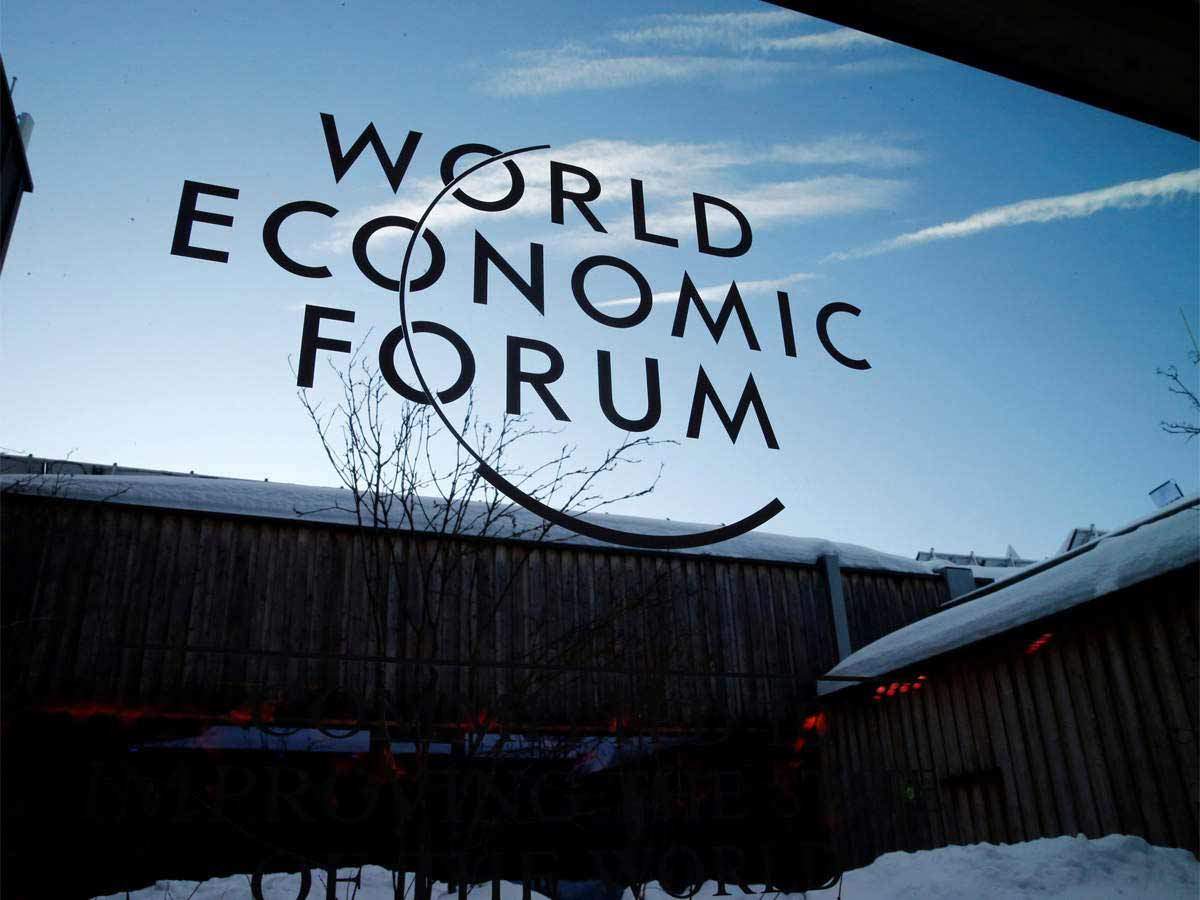
- The latest report is based on a revised ETI methodology that takes into account recent changes in the global energy landscape and the increasing urgency of climate change action.
- 92 out of 115 countries tracked on the ETI increased their aggregate score over the past 10 years, which affirms the positive direction and steady momentum of the global energy transition
Highlights of the report:
- The top 10 countries in the index are Western and Northern European countries.
- Sweden is in the first position followed by Norway (2nd) and Denmark (3rd).
- Other countries in the top 10 are Switzerland (4), Austria (5), Finland (6), the United Kingdom (7), New Zealand (8), France (9) and Iceland (10).
- China (68) and India (87), which collectively account for a third of global energy demand, have both made strong improvements over the past decade, despite coal continuing to play a significant role in their energy mix.
- “China”s improvements primarily result from reducing the energy intensity of the economy, gains in decarbonising the energy mixthrough the expansion of renewables and strengthening the enabling environment through investments and infrastructure.
- Zimbabwe is the last ranked country.
India specific highlights:
- India has been ranked at the 87th position among 115 countries.
- India has targeted improvements through subsidy reforms and rapidly scaling energy access, with a strong political commitment and regulatory environment for the energy transition.
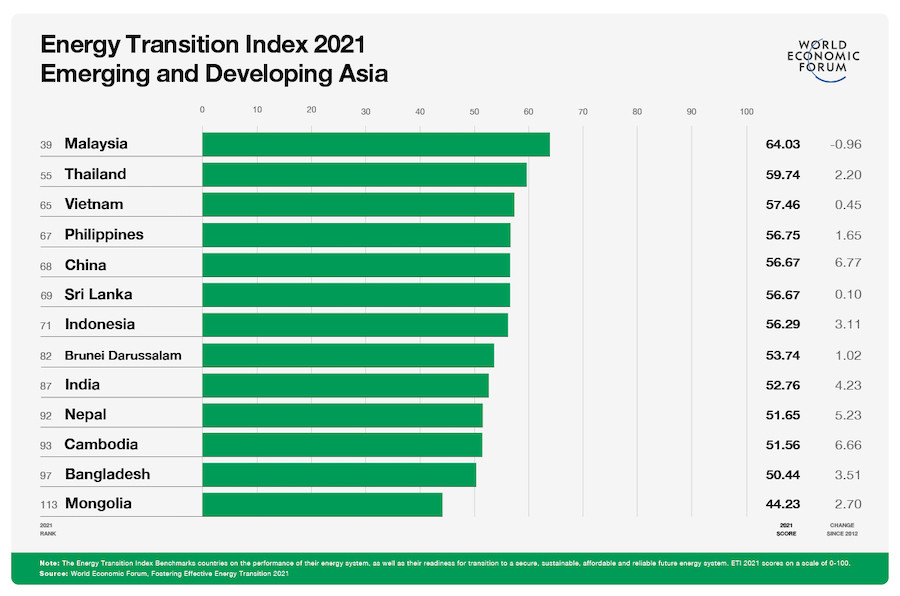
About the Energy Transition Index (ETI):
- ETI is a report from World Economic Forum (WEF).
- It is an annual ranking.
- The index tracks nations on the current performance of their energy systems across various aspects.
- The index benchmarks 115 countries on the current performance of their energy systems across three dimensions :
- Economic development and growth
- Environmental sustainability
- Energy security and access indicators — and their readiness to transition to secure, sustainable, affordable, and inclusive energy systems.
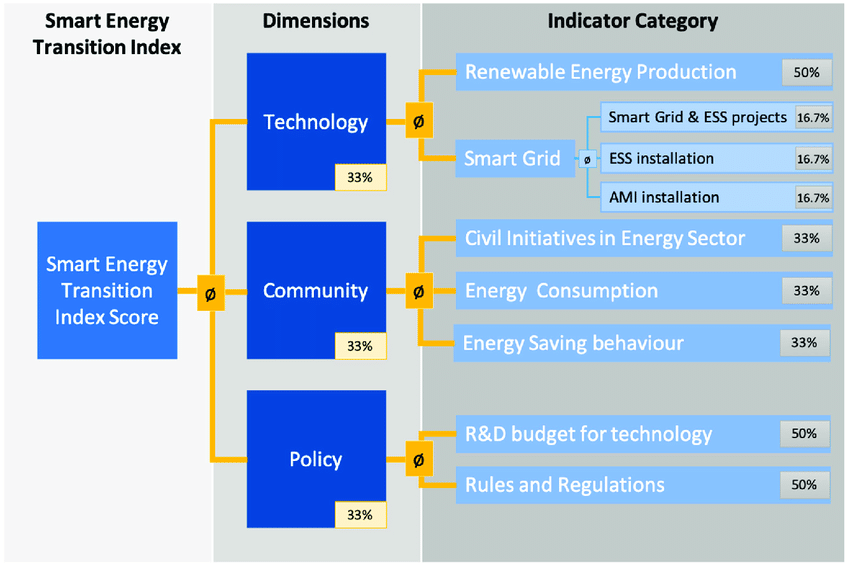
Get an IAS/IPS ranker as your 1: 1 personal mentor for UPSC 2024
Attend Now
Note4Students
From UPSC perspective, the following things are important :
Prelims level: Not much
Mains level: Paper 2- India-US relations
About USCIRF
- U.S. Commission on International Religious Freedom (USCIRF) is an independent bi-partisan commission.
- USCIRF recommendations are non-binding.
- The Trump administration had rejected the USCIRF recommendation to designate India a CPC last year.
- Last year India had denied visas to members of USCIRF who wanted to visit India for their assessment.
What are the key concerns of the report
- The key concerns of the 2021 report include the Citizenship Amendment Act.
- On the National Register of Citizens (NRC), the report says, “The consequences of exclusion – as exemplified by a large detention camp being built in Assam – are potentially devastating…”
- Efforts to prohibit interfaith marriage – such as those in Uttar Pradesh and Madhya Pradesh – are also highlighted as a concern.
- In an apparent reference to the Tablighi Jamaat Markaz in March 2020, the USCIRF says that at the beginning of the COVID-19 pandemic, disinformation and hateful rhetoric often targeted religious minorities.
Recommendations of the report to the US Congress
- The USCISRF recommended that the administration impose targeted sanctions on Indian individuals and entities for ‘severe violations of religious freedom’.
- A second recommendation was for the administration to promote inter-faith dialogue and the rights of all communities at bilateral and multilateral forums “such as the ministerial of the Quad].
- Another recommendation – to the U.S. Congress – was to raise issues in the U.S. – India bilateral space, such as by hosting hearings, writing letters and constituting Congressional delegations.
Get an IAS/IPS ranker as your 1: 1 personal mentor for UPSC 2024
Attend Now
Note4Students
From UPSC perspective, the following things are important :
Prelims level: Covaxin and Covishield
Mains level: Paper 2- Breakthrough infections
Breakthrough infection
- ICMR said that a small fraction of those vaccinated with either Covaxin or Covishield have tested positive (i.e. breakthrough” infections).
- However, these instances do not undermine the efficacy of the vaccines.
- The immune response begins to develop usually two weeks after every dose and there are variations within individuals, too.
- Of the 9.3 million who received the first dose of Covaxin, 4,208 tested positive; and of the 1.7 million who received the second dose, 695 tested positive.
- For Covishield, of the 100.3 million who received the first dose, 17,145 tested positive; and of the 15 million who got the second dose, 5,014 tested postive.

What explains infections after vaccination
- Healthcare and frontline workers, who were among the first to be vaccinated, were as a population far more exposed to the virus and therefore more susceptible.
- Secondly, the emergence of “the highly transmissible second wave (newer variants) ” may have contributed to instances of infection among those vaccinated.
- Several variants, which have mutations that have been shown to avoid detection by the immune system, and in some cases reduce the efficacy of vaccines, have been reported globally, including in India.
Get an IAS/IPS ranker as your 1: 1 personal mentor for UPSC 2024
Attend Now
Note4Students
From UPSC perspective, the following things are important :
Prelims level: Not much
Mains level: Paper 2- Protecting the police from political interference
The article suggests the need for reforms in the process of appointment to the police chief to ensure the political neutrality of the police.
Process of appointing and removing police chief
- A crucial way in which governments exercise control over the State police is through their unregulated power to decide who the chief will be.
- There is no independent vetting process to assess the suitability of qualified candidates, and the government’s assessment, if it is done at all, remains opaque and is an exercise behind closed doors.
- The moot reform issue is in ensuring the right balance between the government’s legitimate role in appointing or removing the police chief with the need to safeguard the chief’s operational autonomy.
Need for reforms
Two elements are vital to reforms in this area.
1) Shift the responsibility to independent oversight body of which government is one part
- The National Police Commission (NPC) (1979), and the Supreme Court in its judgment in 2006, in the Prakash Singh case suggested establishing a state-level oversight body with a specified role in the appointment and removal of police chiefs.
- While the Supreme Court entrusted the Union Public Service Commission (UPSC) with a role in shortlisting candidates from which the State government is to appoint the police chief.
- However, the Model Police Bill, 2015 places the responsibility with a multiparty State Police Board, also referred to as the State Security Commission (SSCs) instead.
No compliance with SC directive in the formation of SSC
- While 26 States and the Union Territories have established SSCs, not a single one adheres to the balanced composition suggested by the top court.
- Some do not include the Leader of the Opposition; others neither include independent members nor follow an independent selection process of the members.
- In essence, the commissions remain dominated by the political executive.
- Moreover, in as many as 23 States, governments retain the sole discretion of appointing the police chief. Assam, Jharkhand, Karnataka, Meghalaya and Mizoram are the only States where, on paper, the SSC is given the responsibility of shortlisting candidates.
2) Need for transparency
- The second element critical to police reforms is instituting an independent and transparent selection and decision-making process around appointment and removal, against objective criteria.
- On appointments, the Court and the Model Police Act require the UPSC/SSC to shortlist candidates on the basis of length of service, service record, and range of experience and a performance appraisal of the candidates over the past 10 years.
- However, no further guidance has been developed on explaining these terms or specifying their elements.
- Similarly, no scrutiny process has been prescribed to justify removals from tenure posts.
- The National Police Commission had required State governments to seek the approval of the State Security Commission before removing the police chief before the end of term.
- This important check was diluted under the Prakash Singh judgment that only requires governments to consult the SSC.
- Most States omit even this cursory step.
- The Supreme Court has rightly emphasised that “prima facie satisfaction of the government” alone is not a sufficient ground to justify removal from a tenure post in government, such as that of the police chief (T.P. Senkumar vs Union of India, 2017).
- The rule of law requires such decisions be for compelling reasons and based on verifiable material that can be objectively tested.
Way forward
- Clear and specific benchmarks need to be integrated into decision-making processes, both on appointments and removals, to prevent politically motivated adverse actions.
- In improving transparency the United Kingdom provides a useful example by introducing public confirmation hearings as an additional layer of check for the appointment of the heads of their police forces.
Consider the question “Examine the status of compliance of the states to the directives of the Supreme Court with respect to the constitution of State Security Commission in the Prakash Singh case.”
Conclusion
Reforms are needed on urgent to ensure fairness in administrative decisions and to protect the political neutrality of the police. Any further delay in implementing reforms in this area will continue to demoralise the police and cripple the rule of law.
Get an IAS/IPS ranker as your 1: 1 personal mentor for UPSC 2024
Attend Now
Note4Students
From UPSC perspective, the following things are important :
Prelims level: Green hydroge
Mains level: Paper 2- Scaling up green hydrogen manufacturing capacity in India
Green hydrogen could help significantly in India’s transition to low carbon future. However, there are several challenges in ramping up its manufacturing. The article suggests measures to deal with these challenges.
Increasing the production of green hydrogen
- India will soon join 15 other countries in the hydrogen club as it prepares to launch the National Hydrogen Energy Mission (NHEM).
- India will soon join 15 other countries in the hydrogen club as it prepares to launch the National Hydrogen Energy Mission (NHEM).
- In 2030, according to an analysis by the Council on Energy, Environment and Water (CEEW), green hydrogen demand could be up to 1 million tonnes in India across application in sectors such as ammonia, steel, methanol, transport and energy storage.
Dealing with challenges
Several challenges in scaling up to commercial-scale operations persist. Following are five recommendations.
1) Decentralise green hydrogen production
- Decentralised hydrogen production must be promoted through open access of renewable power to an electrolyser (which splits water to form H2 and O2 using electricity).
- Currently, most renewable energy resources that can produce low-cost electricity are situated far from potential demand centres.
- Producing oxygen at such locations and then shipped, it would significantly erode the economics of it.
- A more viable option would be wheeling electricity directly from the solar plant.
- However, the electricity tariffs could double when supplying open-access power across State boundaries.
- Therefore, operationalising open access in letter and spirit, as envisioned in the Electricity Act, 2003, must be an early focus.
2) Ensure access to round-the-clock renewable power
- To minimise intermittency associated with renewable energy, for a given level of hydrogen production capacity, a green hydrogen facility will store hydrogen to ensure continuous hydrogen supply.
- Therefore, as we scale up to the target of having 450 GW of renewable energy by 2030, aligning hydrogen production needs with broader electricity demand in the economy would be critical.
3) Blending green hydrogen in industrial sector
- We must take steps to blend green hydrogen in existing processes, especially the industrial sector.
- Improving the reliability of hydrogen supply by augmenting green hydrogen with conventionally produced hydrogen will significantly improve the economics of the fuel.
- This will also help build a technical understanding of the processes involved in handling hydrogen on a large scale.
4) Facilitate investment
- Policymakers must facilitate investments in early-stage piloting and the research and development needed to advance the technology for use in India.
- The growing interest in hydrogen is triggered by the anticipated steep decline in electrolyser costs.
- Public funding will have to lead the way, but the private sector, too, has significant gains to be made by securing its energy future.
5) Focus on domestic manufacturing
- India must learn from the experience of the National Solar Mission and focus on domestic manufacturing.
- Establishing an end-to-end electrolyser manufacturing facility would require measures extending beyond the existing performance-linked incentive programme.
- India needs to secure supplies of raw materials that are needed for this technology.
- Further, major institutions like the DRDO, BARC and CSIR laboratories have been developing electrolyser and fuel-cell technologies.
Consider the question “Even before it has reached any scale, green hydrogen has been anointed the flag-bearer of India’s low-carbon transition. In lights of this, examine the challenges India faces in scaling up its green hydrogen production and suggest the ways to deal with these challenges.”
Conclusion
Hydrogen may be lighter than air, but it will take some heavy lifting to get the ecosystem in place.
Get an IAS/IPS ranker as your 1: 1 personal mentor for UPSC 2024
Attend Now
- Scientists have developed a Covid-19 vaccine that could offer protection against not only existing and future strains of the SARS-CoV-2 coronavirus.
- The vaccine costs $1 a dose. It uses the plasmid of E-coli bacteria to produce the vaccine.
- A plasmid is a small, extrachromosomal DNA molecule within a cell that is physically separated from chromosomal DNA and can replicate independently.
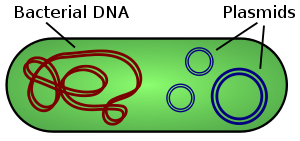
- They are most commonly found as small circular, double-stranded DNA molecules in bacteria; however, plasmids are sometimes present in archaea and eukaryotic organisms.
Get an IAS/IPS ranker as your 1: 1 personal mentor for UPSC 2024
Attend Now
Fifth session of Codex Committee on Spices and Culinary Herbs (CCSCH)established under Codex Alimentarius Commission (CAC) inaugurated virtually on 20th April with a series of virtual sessions.
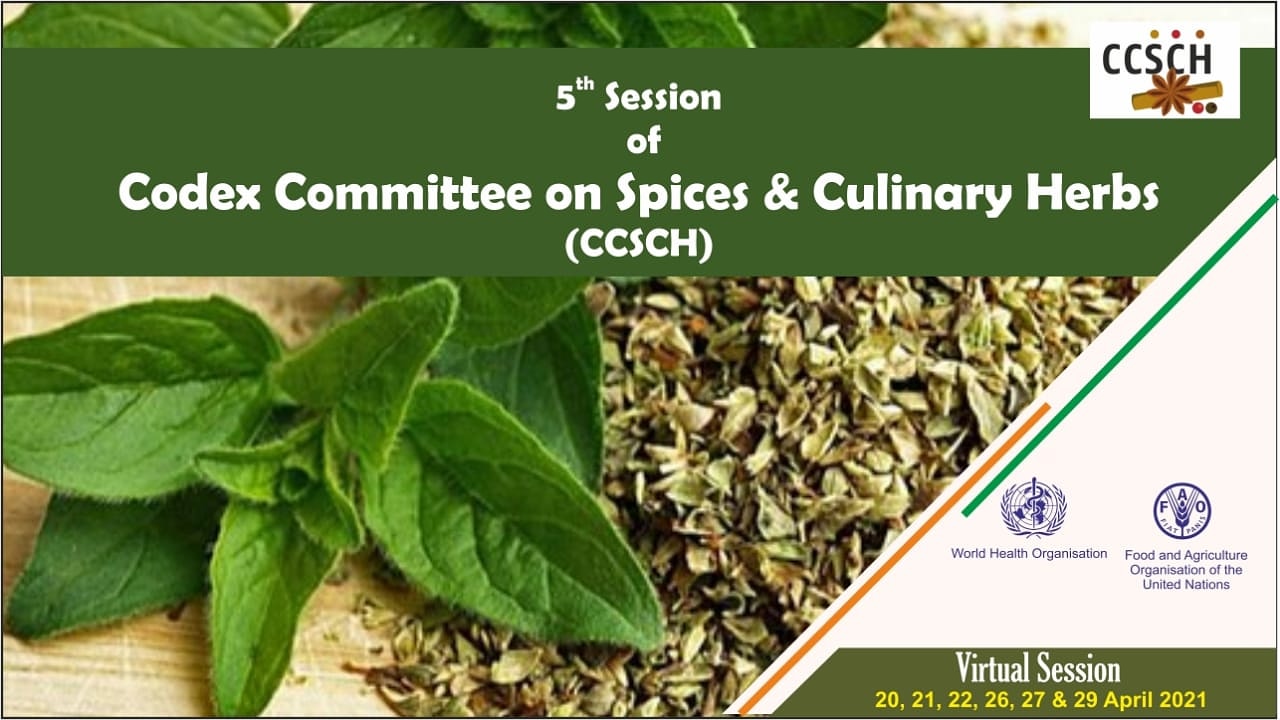
- The session will see nearly 300 experts from 50 countries taking part in the deliberations.
About CCSCH:
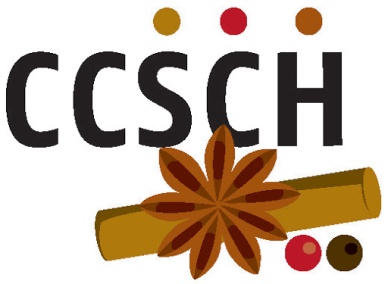
- Codex Committee on Spices and Culinary Herbs was formed in 2013 with support of more than a hundred countries with India as the host country and Spices Board India as the Secretariat for organising the sessions of the committee.
- The objective was to develop and expand worldwide standards for spices and culinary herbs, and to consult with other international organisations in the standards development process.
- Since its inception, the Codex Committee on Spices and Culinary Herbs has been successful in developing harmonised global Codex standards for spices and herbs.
- In its past four sessions, the committee developed and finalized standards for four spices, viz. dried or dehydrated forms of black/white/green pepper, cumin, thyme, and garlic.
About CAC:
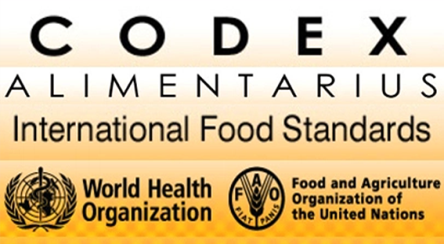
- The Codex Alimentarius Commission (CAC) is an intergovernmental body.
- Set up in 1963.
- It was established jointly by the UN’s Food and Agriculture Organisation (FAO) and the World Health Organisation (WHO), within the framework of the Joint Food Standards Programme to protect the health of consumers and ensure fair practices in the food trade.
Get an IAS/IPS ranker as your 1: 1 personal mentor for UPSC 2024
Attend Now
Note4Students
From UPSC perspective, the following things are important :
Prelims level: Not much
Mains level: Paper 3- Banning cryptocurrency
Law to ban private cryptocurrencies
- The Cryptocurrency and Regulation of Official Digital Currency Bill, 2021 aims to prohibit all private cryptocurrencies.
- It lays the regulatory framework for the launch of an “official digital currency” was set to be introduced in Parliament during the Budget session, but was not taken up.
- A high-powered inter-ministerial committee has also previously recommended the banning of all private cryptocurrencies.
- In April 2018, the RBI banned banks and other regulated entities from supporting crypto transactions after digital currencies were used for frauds.
- In March 2020, the Supreme Court struck down the RBI’s ban on crypto, terming its circular unconstitutional.
- One of the SC’s reasons for overturning the ban is that cryptocurrencies are unregulated but not illegal in India.
Central bank-issued digital currency
- The RBI had said central banks are not only exploring DLT (Distributed Ledger Technology) for its application in improving financial market infrastructure but also considering it as a potential technological solution in implementing central bank digital currency (CBDC).
- DLT and blockchain have been explored extensively by the People’s Bank of China as a possible technology for launching CBDC.
- Apart from CBDC, PBoC is supporting research on using blockchain for trade finance, especially after the support from the President of China for the blockchain technology, as an important breakthrough for innovations.
Get an IAS/IPS ranker as your 1: 1 personal mentor for UPSC 2024
Attend Now
Note4Students
From UPSC perspective, the following things are important :
Prelims level: ESIS and EPF
Mains level: Paper 3- ESIS and EPF
The idea of welfare state
- Covid reminds us that a modern state is a welfare state as governments worldwide launched 1,600 plus new social protection programmes in 2020.
- Sustainable social security lies in raising India’s 138th ranking in country per-capita GDP.
- However, on the social security schemes, there is a case for three reforms to our biggest health insurance and pension schemes:
- These schemes are the Employee State Insurance Scheme (ESIS) and Employee Provident Fund (EPF).
Issues with ESIS
- The Employee State Insurance Scheme (ESIS) is India’s richest and biggest health insurance scheme with 13 crore people covered and Rs 80,000 crore in cash.
- Employers with more than 10 employees make a mandatory 4 per cent payroll deduction for employees earning up to Rs 21,000 per month.
- Despite covering roughly 10 per cent of India’s population, a recent working paper from Dvara Research suggests high dissatisfaction.
- The constraint is hardly resources: ESIC’s unspent reserves are larger than the Central government’s healthcare budgetary allocation.
Issues with EPF
- EPF is India’s biggest pension scheme with a Rs 12 lakh crore corpus and 6.5 crore contributors.
- Employers with more than 20 employees make mandatory 24 per cent payroll deductions for employees earning up to Rs 15,000 per month.
- It only covers 10 per cent of India’s labour force and 60 per cent of accounts and 50 per cent of registered employers are inactive.
- EPF offers poor service and pathetic technology despite employer-funded administrative costs that make it the world’s most expensive government securities mutual fund.
Updating the risk-sharing frameworks in society
- In a book titled What We Owe Each Other: A New Social Contract, Nemat Shafik suggests updating the risk-sharing framework in societies.
- This is because current structures are breaking up under the weight of changes in the role of women, longer careers, technology, globalisation, and much else.
- She suggests a more nuanced social security redistribution across time (the piggy bank function), incomes (the Robin Hood function), and financial burden-bearing (the state, individuals, or employers).
- In India, the answer lies in fixing the problems of EPF and ESIS.
Solution to the EPF and ESIS problems
- Both suffer from poor coverage, high costs, unsatisfied customers, metrics confused with goals, jail provisions, excessive corruption, low expertise, rude and unaccountable staff with no fear of falling or hope of rising, and no competition.
Let’s look at possible solutions.
1) Structure
- EPF and ESIS combine the roles of policymaker, regulator, and service provider.
- Splitting roles is a precondition for performance because goals, strategy, and skills are different.
- An independent policymaker horrified with only 6 lakh of India’s 6.3 crore enterprises covered would create competition.
- An independent regulator terrified by ESIS overcharging would frown on a claims ratio of less than 75 per cent.
- An independent service provider would invest heavily in technology, customer service, and human capital.
- Splitting roles would lead to the following benefits:
- 1) Competition from NPS for EPF.
- 2) Ending VIP opt-out by merging CGHS with ESIS,
- 3) Raising enforceability by making employee provident fund contribution voluntary.
- 4) Improving portability by de-linking accounts from employers.
- 5) Targeting universalisation by simultaneously ending minimum employer head-count and employee salary contribution thresholds while introducing absolute contribution caps.
- The Health and Finance Ministry would be logical homes for ESIS and EPF policy roles.
2) Governance
- The governing board of ESIS and EPFO have 59 and 33 members respectively.
- Such a large group can’t have meaningful discussions, make decisions, and exercise oversight.
- This governance deficit needs smaller boards (not more than 15), age limits, term limits, expertise, active sub-committees (HR, Investments, and technology) and real powers.
3) Leadership
- Health and pensions need complex skills developed over time.
- Yet, ESIS and EPF are led by generalist bureaucrats.
- Both organisations need professional chief executives.
- Philosopher Isaiah Berlin’s framing of the generalist vs specialist debate as hedgehogs (who know one thing) and foxes (who know many things) is important.
- A less generalist, non-transitory, and non-cadred chief executive would create a new tone-from-the-top around performance management, technology, and service outcomes.
Conclusion
Social security — not a borrowing binge that steals from our grandchildren — can blunt structural and COVID inequality when combined with complementary policies like formalisation, financialisation, urbanisation, and better government schools. But a great place to start is three flick-of-pen, non-fiscal reforms at EPF and ESIS.
Get an IAS/IPS ranker as your 1: 1 personal mentor for UPSC 2024
Attend Now
Note4Students
From UPSC perspective, the following things are important :
Prelims level: FDI restrictions on e-commerce
Mains level: Paper 3- FDI in e-commerce
We need a comprehensive FDI policy on trade to take care of the needs of all the stakeholders. The article highlights the issues faced by the e-commerce sector in relation to the FDI policy.
E-commerce as an enabler
- With their efficient, quick and reliable logistics network, e-commerce platforms have nudged consumer behaviour patterns from an offline to an online shopping mode.
- During the pandemic, e-commerce emerged as an enabler in ensuring the availability of essentials to the masses.
- E-commerce is going to be increasingly important in the future of retail shopping in India and the world over.
- It is estimated to become a $100 billion industry by 2024, which was at $38.5 billion until 2017.
- The trend will continue to grow with the government’s impetus on digital literacy, also supported by the increasing penetration of internet and smartphone users.
- However, what the sector lacks is the bandwidth of operation.
Issues with FDI policy for e-commerce
- In addition to the FDI Policy/FEMA, other laws such as IT Act, Consumer Protection Act, and those pertaining to IP and copyright, regulate the e-commerce sector in India.
- Of these, the FDI policy plays an important role as massive investments are needed to build and strengthen the entire ecosystem of the e-commerce sector in the country.
- FDI policies on trade have evolved over time as policy-making was done from time to time mostly responding to the needs of the market coupled with political feasibility.
- Thus, FDI policy in cash and carry or wholesale B2B operations is different (100 per cent FDI allowed under automatic route) compared to highly restrictive FDI policy on retail B2C trade.
- Similarly, an artificial distinction was created between single-brand retail and multi-brand retail as opposition to multi-brand retail was strong: 100 per cent FDI is allowed under automatic route in single-brand retail whereas FDI regime in multi-brand retail is quite restricted.
- E-commerce is not allowed under FDI policy in multi-brand retail.
- The FDI policy on e-commerce is quite different as e-commerce platforms are allowed to work only as a marketplace with permission to provide certain specified services to sellers and buyers.
- However, FDI is allowed in the inventory model when these platforms sell fresh farm produce made in India.
- There is no specific policy on FDI in e-commerce for exports.
Need for comprehensive FDI policy for trade
- The rapid expansion of the retail, organised retail as well e-commerce sector in India in the coming years will create huge opportunities for all.
- The policies that have evolved over time need a relook to balance the interests of all in a win-win policy.
- Today, our small businesses employing an exceptionally large number of workers need to use e-commerce more and more to augment their sales.
- E-commerce provides them with the means to access a much bigger market without having to overly invest in marketing. This should include more and more foreign markets.
- Consumers have benefited enormously from e-commerce.
- Also, the harmonious working of online and offline retailers is essential.
- With GST and the drive towards digitisation, more small traders need to be enabled to make the transition and take advantage of the expanding opportunities.
Consider the question “Why e-commerce sector is important for the economy of a country? What are the issues the sector faces in India?”
Conclusion
Public policy on e-commerce needs to place an equal premium on the views and interests of all the stakeholders in the ecosystem to strengthen our domestic businesses and create many more jobs and livelihood opportunities in the country to fulfil the dreams of Atmanirbhar Bharat.
Get an IAS/IPS ranker as your 1: 1 personal mentor for UPSC 2024
Attend Now




.jpg?ext=.jpg)







